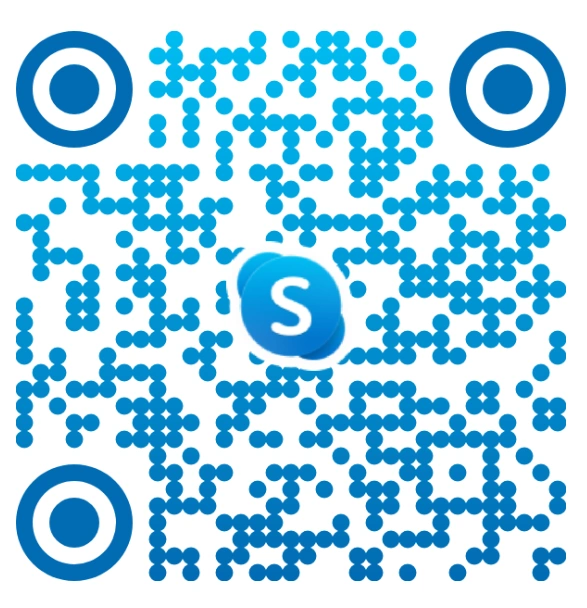Cursor vs Copilot: Which AI Coding Assistant Is Right for Your Enterprise Solutions?
Artificial Intelligence is redefining the way software is built, optimized, and delivered. In today’s fast-paced development environments, AI coding assistants have evolved from simple autocomplete tools into powerful platforms capable of generating entire functions, refactoring code, and even driving autonomous workflows. As enterprises scale and strive for faster innovation cycles, tools like Cursor AI and GitHub Copilot are gaining momentum as leading AI-powered development solutions.
Choosing between Cursor vs Copilot is no longer just a technical decision. It is a strategic move that directly impacts productivity, code quality, and team efficiency. Both assistants offer intelligent code completions, reduce repetitive tasks, and bring contextual understanding to your development pipeline. Yet, their differences in features, models, integration capabilities, and enterprise readiness make the comparison more nuanced.
In this blog, we deliver an in-depth breakdown of GitHub Copilot vs Cursor, highlighting key strengths, unique capabilities, real-world use cases, and integration workflows. Whether you’re exploring automation, scalability, or secure enterprise development, we help you decide which is the best AI coding assistant 2025 for your business needs.
Understanding AI Coding Assistants
AI coding assistants are transforming how developers build, test, and ship software. From improving productivity to automating complex tasks, these tools are now essential in modern enterprise development workflows.
What are AI coding assistants?
AI coding assistants are tools powered by artificial intelligence models that help developers write better code by providing suggestions, auto-completions, and code generation. These assistants act like intelligent pair programmers, speeding up development while reducing human error.
The evolution of AI code generation tools
From rule-based code completion to AI code generation tools 2025, these platforms have evolved to understand context, programming languages, and even architectural patterns. Today’s tools like Cursor AI coding assistant and GitHub Copilot models leverage deep learning to support developers across languages and frameworks.
Role in modern enterprise workflows
In enterprise environments, these tools go beyond coding. They streamline workflows, integrate with CI/CD pipelines, assist with testing, and even help in documentation. This leads to better code quality, reduced deployment time, and increased team efficiency.
Key Benefits of Using AI Coding Assistants for Enterprises
Adopting AI coding assistants is no longer just a trend. It is a strategic move for enterprises aiming to boost efficiency, reduce errors, and innovate faster. These tools empower teams to write better code, collaborate seamlessly, and scale development like never before.
Boost in developer productivity
AI coding assistants reduce repetitive manual tasks, suggest relevant code snippets, and handle boilerplate code generation. This helps teams move faster and meet tight deadlines with greater efficiency. They also improve focus by minimizing context-switching during complex development cycles.
Reduction in code errors and time to deployment
By offering context-aware suggestions aligned with industry best practices, these assistants help prevent bugs before they occur. This results in faster debugging and shorter release cycles. AI tools also identify logic flaws early, reducing costly rework during QA.
Improved team collaboration
AI tools promote consistent coding styles and patterns across teams, regardless of skill levels. They also make onboarding new developers easier by guiding them through project-specific structures. With shared AI insights, teams work more cohesively in distributed environments.
Scalability and consistency for large projects
As enterprise codebases grow, maintaining code quality becomes a challenge. AI coding assistants enforce reusable patterns and consistent practices, making large-scale development more manageable. They support scalable architectures while reducing technical debt over time.
Long-term cost efficiency
With faster coding, fewer bugs, and reduced time to deployment, enterprises significantly lower their development costs. The return on investment grows over time as productivity gains compound. These benefits make AI coding assistants a smart long-term strategy for any enterprise.
Also Read : Using Node.js as a Scalable Backend for AI/ML Applications
Cursor AI: Features, Models, and Capabilities
In the growing space of AI-powered development tools, Cursor AI is emerging as a leading solution for intelligent coding. With powerful features, flexible models, and automation capabilities, it offers everything enterprises need to accelerate modern software development.
1. What is Cursor AI?
Cursor AI is an advanced AI-powered coding assistant designed to streamline software development through intelligent code generation and automation. Tailored for both solo developers and large-scale enterprise teams, Cursor AI enables faster, smarter, and more efficient coding. Whether you’re building new applications or maintaining legacy systems, this platform enhances productivity while reducing manual overhead.
As an AI coding assistant for enterprises, Cursor AI blends deep learning with intuitive developer tools to transform how code is written, tested, and deployed. It stands out in the Cursor vs Copilot comparison for its agent-driven automation and task-specific flexibility.
2. Cursor AI Coding Assistant and Editor Features
At the core of the platform is the Cursor AI coding assistant, built into a lightweight yet powerful code editor. The editor is optimized for modern development workflows and includes features like:
- Real-time AI code suggestions
- Intelligent autocompletion and error detection
- Built-in debugging tools
- Seamless code refactoring options
- Multi-language support
These Cursor AI code editor features are especially useful for enterprise teams managing large codebases, enabling improved collaboration and faster project cycles.
By combining these tools, Cursor AI boosts both individual developer productivity and team efficiency, positioning itself as one of the best AI tools for enterprise software teams in 2025.
3. Cursor AI Agents and Autonomous App Development
One of the standout elements of Cursor AI is its support for Cursor AI agents, intelligent, task oriented AI components designed to automate development workflows. These agents are capable of handling complex, multi step tasks such as:
- Building and scaffolding full UI components
- Writing and executing unit or integration tests
- Refactoring legacy code based on custom rules
- Integrating third-party APIs into applications
- Documenting code automatically
These features power the Cursor AI autonomous app development platform, helping teams save time and reduce technical debt. With minimal developer input, agents can drive entire modules from concept to completion, making them a game-changer for agile and DevOps teams.
4. Cursor AI Capabilities Explained
The broader Cursor AI capabilities extend beyond code generation. The platform is built with enterprise flexibility in mind, offering:
- Contextual understanding of codebases, enabling relevant and accurate suggestions
- Natural language prompting, allowing developers to write comments or commands in plain English
- Real-time collaboration support, essential for distributed teams
- Extensive plugin and integration options, enhancing IDE and toolchain connectivity
- Multi-framework support, including React, Node.js, Python, Java, and more
This makes Cursor AI one of the most versatile and scalable AI code generation tools 2025 has to offer, especially for businesses looking to streamline complex workflows.
5. How Does Cursor AI Work?
How does Cursor AI work? It operates on top of state-of-the-art large language models trained on diverse code datasets. These models understand syntax, context, and development patterns across different programming languages.
Here’s how it functions within a project:
- Analyzes code context and structure: Cursor scans your existing codebase to understand class hierarchies, function logic, and dependencies.
- Processes natural language prompts: You can type instructions like “generate a login form” or “refactor this function,” and the assistant delivers the result.
- Offers intelligent suggestions: Based on your input and surrounding code, Cursor suggests accurate lines of code or full blocks.
- Enables autonomous execution: With agents, developers can define tasks and let Cursor carry them out independently.
This approach improves coding speed, reduces repetitive tasks, and helps enterprises adopt AI tools supporting secure enterprise development with ease.
Also Read : Webflow vs Bubble: Key Differences, Use Cases, and Which to Choose
GitHub Copilot: Enterprise-Ready AI Tool
As enterprises move toward artificial intelligence automation in software development, GitHub Copilot stands out as a powerful and mature solution. Built in collaboration with OpenAI, Copilot offers deep code intelligence, smart automation, and robust enterprise support, making it one of the most reliable AI coding assistants for enterprises today.
With the evolution of GitHub Copilot models and new enterprise-grade features, it now supports everything from real-time suggestions to advanced agent-driven tasks. In the GitHub Copilot vs Cursor comparison, Copilot excels in GitHub-native environments and seamless IDE integrations.
1. What is GitHub Copilot?
GitHub Copilot is a next-generation AI coding assistant developed by GitHub and powered by OpenAI’s language models. Designed to assist developers by predicting code, suggesting logic structures, and completing functions, it dramatically speeds up the coding process.
This tool analyzes your current code context, project structure, and even your coding style to offer tailored suggestions. Whether writing new functions, resolving errors, or scaffolding modules, GitHub Copilot brings efficiency and accuracy into your daily workflow.
Enterprises that prioritize speed, cloud integration, and collaboration find Copilot to be a solid fit for scaling development operations across distributed teams.
2. GitHub Copilot Agent Mode Explained
One of the most recent advancements is the introduction of GitHub Copilot Agent Mode, a feature that elevates the assistant’s capabilities from simple code completion to multi-step task execution.
With Agent Mode, GitHub Copilot can:
- Generate and organize full components or file structures
- Write and execute automated tests
- Complete multi-line logic chains and repetitive patterns
- Help resolve bugs across multiple files or functions
This enhancement makes Copilot suitable for advanced enterprise needs, helping development teams automate manual processes and maintain clean, consistent codebases with less effort. It’s one of the reasons Copilot is recognized as a key player in AI code generation tools in 2025.
3. GitHub Copilot Models and Intelligence
At the heart of GitHub Copilot’s intelligence lies a set of large language models that have been fine-tuned using massive code repositories. These include advanced variants of OpenAI’s Codex and GPT models, trained specifically to understand programming logic, documentation structure, and developer intent.
The GitHub Copilot models support a wide range of programming languages and adapt quickly to different coding environments. These models are designed to:
- Understand and replicate common coding conventions
- Analyze code context to reduce logical errors
- Suggest precise and functional code snippets across diverse scenarios
- Offer documentation and comment completions for clearer understanding
For enterprise teams working on large, complex systems, this model-driven intelligence significantly reduces development overhead and boosts output quality.
4. GitHub Copilot for Enterprise Use
GitHub Copilot for enterprise is not just an upgrade. It is a complete platform tailored for secure, compliant, and scalable software development. It includes:
- Admin-level controls for managing access, user roles, and usage policies
- Privacy and compliance features, including support for GDPR and enterprise-level security standards
- Integration with GitHub Enterprise, enabling seamless adoption across your existing infrastructure
- Centralized monitoring and analytics, giving leaders insight into usage and impact
As one of the top enterprise-grade coding assistants, GitHub Copilot ensures your development environment is not only productive but also aligned with your company’s compliance and IT policies.
It also supports GitHub Copilot for enterprise workflows within leading IDEs like Visual Studio Code and JetBrains, offering cross-platform consistency that benefits distributed and hybrid teams.
Also Read : Why Traditional Workflow Automation Fails in Large Enterprises—And How AI Agents Can Fix It
Cursor vs Copilot: Side-by-Side Comparison
Choosing between Cursor AI vs GitHub Copilot depends on several factors such as team needs, project scale, integration requirements, and coding environments. Enterprise solution providers play a key role in evaluating these variables to ensure alignment with business goals. Here is a detailed comparison across core enterprise relevant aspects to help you decide which AI coding assistant best fits your workflow.
| Feature | Cursor AI | GitHub Copilot |
| 1. Interface and Usability | Built-in lightweight code editor optimized for AI workflows. | Native integration with VS Code and JetBrains IDEs for familiar experience. |
| 2. Code Suggestion Quality | Task-based, multi-line completions with agent support. | Fast, inline suggestions ideal for single-function logic and quick fixes. |
| 3. Contextual Understanding | Understands cross-file dependencies and project-wide context. | Strong local file understanding; best for active code editing sessions. |
| 4. Model Control and Customization | Allows prompt tuning, agent instructions, and workflow automation. | Limited control; predefined model behavior for consistent output. |
| 5. Speed and Performance | Performs well in long, structured tasks using agents. | Highly responsive for real-time typing and code suggestions. |
| 6. Enterprise Readiness | Offers customizable workflows and supports enterprise-level use cases. | Integrates tightly with GitHub Enterprise for admin control and analytics. |
| 7. Language and Framework Support | Supports major languages and frameworks with AI adaptability. | Broad language coverage trained on large-scale codebases. |
| 8. Offline / On-Premise Capabilities | Potential for offline or on-premise setup for secure environments. | Cloud-based only; less suited for high-compliance industries. |
| 9. Autonomous Development Features | Supports autonomous app development via Cursor AI agents. | Lacks native agents; focuses on code suggestions rather than task execution. |
| 10. Integration with Enterprise Tools | Plugin-ready and adaptable; supports custom DevOps pipelines. | Seamless GitHub ecosystem integration, strong CI/CD support. |
Enterprise-Grade Capabilities and Considerations
When evaluating AI coding assistants for enterprises, it is critical to consider more than just suggestions and speed. Factors like security, integration, team scalability, and model flexibility directly impact long-term success. That is why many companies choose to hire machine learning developers who can guide tool selection, customization, and deployment. Here is how Cursor AI and GitHub Copilot compare on these enterprise grade capabilities.
Security, Compliance, and Privacy
Both Cursor and GitHub Copilot adhere to modern enterprise standards for data protection, privacy, and secure access. However, the Cursor AI autonomous app development platform offers enhanced transparency, with support for local model execution, a crucial feature for enterprises in regulated industries. Copilot, while secure, operates strictly in the cloud, which may limit control for security sensitive organizations.
Integration with IDEs and CI/CD Systems
GitHub Copilot integrates seamlessly with popular IDEs like Visual Studio Code and JetBrains, making it highly accessible for developers within the GitHub ecosystem. Cursor AI, though built around its own native editor, supports plugin-based integration, allowing enterprises to embed AI assistance into custom DevOps pipelines and CI/CD environments.
Team Collaboration Features
Both tools support essential collaboration features like workspace sharing, version control integration, and multi-user environments. Cursor AI further enhances collaboration by enabling developers to delegate tasks to Cursor AI agents, helping teams automate workflows and maintain consistency across large projects. Copilot complements collaboration via GitHub repositories and pull request reviews.
Model Adaptability at Scale
Enterprises require models that can adjust to diverse coding standards, architectures, and project scopes. Cursor AI offers a higher degree of model control and task customization, allowing teams to fine-tune agent behavior based on specific requirements. While GitHub Copilot remains effective at scale, it provides less flexibility in adapting to unique enterprise workflows.
How to Integrate Cursor or Copilot into Your Enterprise Development Workflow
Successful integration of Cursor AI or GitHub Copilot goes beyond installation. It is about aligning these tools with your development ecosystem, workflows, and compliance needs. With the right AI automation services, enterprises can implement them effectively and unlock their full potential.
1. IDE and Platform Compatibility
Both tools support leading IDEs like Visual Studio Code, ensuring they blend into existing workflows. GitHub Copilot functions as a plugin within major IDEs, while Cursor AI uses a standalone editor purpose-built for AI-driven development.
2. Integrating GitHub Copilot for Enterprise
To deploy Copilot across your team:
- Purchase the Copilot Enterprise plan
- Enable access via GitHub’s admin dashboard
- Install the Copilot extension in each developer’s IDE
- Configure compliance settings, including repository access and privacy rules
This setup ensures secure and policy-compliant access within your existing GitHub workflows.
3. Setting Up Cursor AI for Development Teams
To roll out Cursor AI in your organization:
- Create a team account on the Cursor platform
- Install the Cursor AI editor on user machines
- Enable team collaboration, allowing multiple developers to share tasks
- Define AI agent roles to automate repetitive jobs like writing tests or integrating APIs
This approach allows your team to use Cursor’s agent-based automation for faster, structured development.
4. Onboarding Tips and Best Practices
For smooth adoption at scale:
- Run targeted training sessions to help developers understand how to work with AI prompts
- Begin with a low-risk pilot project to assess value before full rollout
- Monitor performance and refine workflows, ensuring these tools complement rather than complicate your development cycle.
5. API Access and Automation Workflows
Both tools provide APIs to connect with CI/CD pipelines, task runners, or internal dev tools. You can automate actions across repositories using AI code generation tools in 2025 for scalable, hands-off execution.
AI Coding Assistant Performance: Cursor vs Copilot in 2025
As enterprises adopt AI tools at scale, performance metrics like accuracy, speed, and control are critical. In 2025, both Cursor and Copilot stand out, but with strengths in different areas, making it essential to hire AI experts who can align the right tool with your enterprise goals.
AI Coding Model Comparison in Real-World Use
AI coding model comparison shows both tools are capable, but Cursor offers more hands-on control with its agent system, while Copilot excels in contextual, real-time code suggestions.
Benchmarks: Speed, Accuracy, Bug Rate
Cursor shines in project-specific implementations, reducing bug rates through defined logic, while Copilot delivers fast and reliable code completions across diverse codebases.
Best Model for Enterprise Coding Tasks in 2025
The best model for coding depends on team size and project type. For complex enterprise applications, a mix of both may be ideal to balance speed, structure, and flexibility.
Also Read : Unleashing The Power of IoT: Transformative Mobile App Development
Choosing the Right AI Coding Assistant for Your Team
Selecting between Cursor and Copilot depends on your team’s structure, workflow needs, and long-term development goals. Each tool offers distinct advantages based on how and where you plan to implement it, especially when aligned with the right AI development services.
Considerations: Budget, Project Type, Team Size
Teams should evaluate cost, development complexity, and collaboration scale when comparing Cursor vs Copilot for enterprise needs. Understanding your project’s scope helps align the right assistant with your coding environment.
When to Choose Cursor
If you need automation agents and flexible workflows, Cursor AI is ideal for structured, multi-step tasks and enterprise-specific coding logic. It also suits teams looking for more control over how AI is used within their pipeline.
When to Choose Copilot
If you want wide language support and deep GitHub integration, Copilot works best for agile teams using diverse tech stacks and rapid deployments. It’s particularly effective for teams already operating within the GitHub ecosystem.
Can a Hybrid Approach Work?
Absolutely. Many teams use both tools for different stages of development, combining Cursor’s automation with Copilot’s quick code suggestions for maximum efficiency. This dual approach helps balance flexibility, speed, and scalability
Future of AI in Enterprise Software Development
The future of AI coding assistants like GitHub Copilot and Cursor AI is rapidly advancing. Both tools are focusing on smarter model intelligence, better contextual understanding, and enhanced collaboration features. As these platforms evolve, enterprise teams can expect improvements in automation, accuracy, and responsiveness across large-scale projects.
Emerging trends include deeper IDE integration, stronger privacy controls, and next-generation AI pair programming tools. By 2025 and beyond, enterprises will demand AI solutions that are secure, scalable, and capable of supporting complex development workflows. Tools offering intelligent automation and agent-driven coding will define the future of enterprise software.
Final Words
Choosing between Cursor vs Copilot ultimately depends on your enterprise development goals. If your priority is flexible workflows, automation through intelligent agents, and deep task-level execution, then Cursor AI offers the customization and control your team may need. On the other hand, if you are looking for seamless GitHub integration, broad language support, and fast setup, GitHub Copilot is a reliable and efficient choice.
As AI tools mature, selecting the right assistant becomes more strategic than ever. The best AI coding assistant of 2025 is not just about features. It depends on how well it aligns with your workflow, team structure, and scalability needs. Whichever tool you choose, integrating AI into your development stack can greatly enhance productivity, code quality, and delivery speed.
Why Choose Amplework for AI Coding Assistant Integration in Enterprises?
Amplew is a popular generative AI services provider that specializes in helping enterprises seamlessly adopt AI technologies like Cursor AI and GitHub Copilot to elevate their development processes. Our deep understanding of AI coding assistants, combined with hands-on experience across industries, enables us to guide your team through intelligent tool selection, integration, and optimization. Whether you’re scaling projects, improving code quality, or automating workflows, we tailor AI solutions that align with your business goals.
We go beyond just implementation. Our team ensures that AI assistants like Cursor and Copilot are configured to meet enterprise grade security, compliance, and collaboration standards. From IDE integration to agent based task execution, we handle every step of the setup, onboarding, and customization process. This helps your developers get up to speed quickly while ensuring the tools add real, measurable value to your workflows.
With a forward thinking approach and a passion for innovation, Amplework is the trusted partner for companies aiming to stay ahead in the era of AI powered development. We do not just bring tools to your stack. We bring strategy, support, and long term scalability. If you are ready to transform how your teams build and ship software, Amplework is ready to lead the way.
Frequently Asked Questions (FAQs)
Is GitHub Copilot better than Cursor AI for enterprise development?
GitHub Copilot is a powerful tool for enterprises looking for seamless GitHub integration, wide language support, and real-time code suggestions. However, Cursor AI offers more flexibility with automation agents and structured task execution. The better option depends on your enterprise goals and development workflow.
What is the difference between Cursor AI and GitHub Copilot?
Cursor AI focuses on intelligent task automation using agents, making it ideal for complex, multi-step development processes. GitHub Copilot, on the other hand, offers quick, context-aware code suggestions within familiar IDEs. While both are AI coding assistants, Cursor emphasizes autonomy, and Copilot prioritizes speed and ease of use.
Which AI coding assistant is best for large development teams in 2025?
For large teams managing complex workflows, Cursor AI may be more suitable due to its agent-based automation, collaborative features, and integration potential with AI consulting services. GitHub Copilot is also effective for fast-paced development across multiple languages. Many enterprises find that using both tools strategically, alongside tailored AI consulting services, offers the best balance of speed, scalability, and control.
Can I use both GitHub Copilot and Cursor AI together?
Yes, many development teams use both Cursor AI and GitHub Copilot to complement each other. Copilot is great for writing and completing code quickly, while Cursor handles structured tasks, testing, and automation. Using both can boost productivity and streamline different stages of the software lifecycle.
How does Cursor AI work for autonomous app development?
Cursor AI uses large language models and intelligent agents to handle end-to-end development tasks. Developers can assign agents to build components, refactor code, write tests, or integrate APIs with minimal input. This makes it a valuable platform for autonomous app development in enterprise environments.


 sales@amplework.com
sales@amplework.com
 (+91) 9636-962-228
(+91) 9636-962-228





